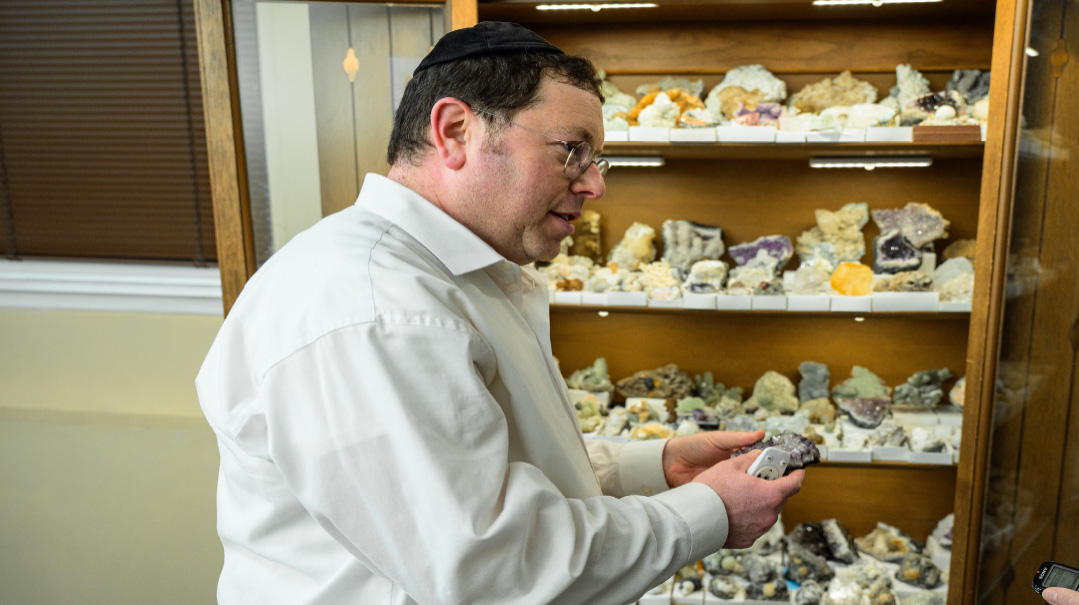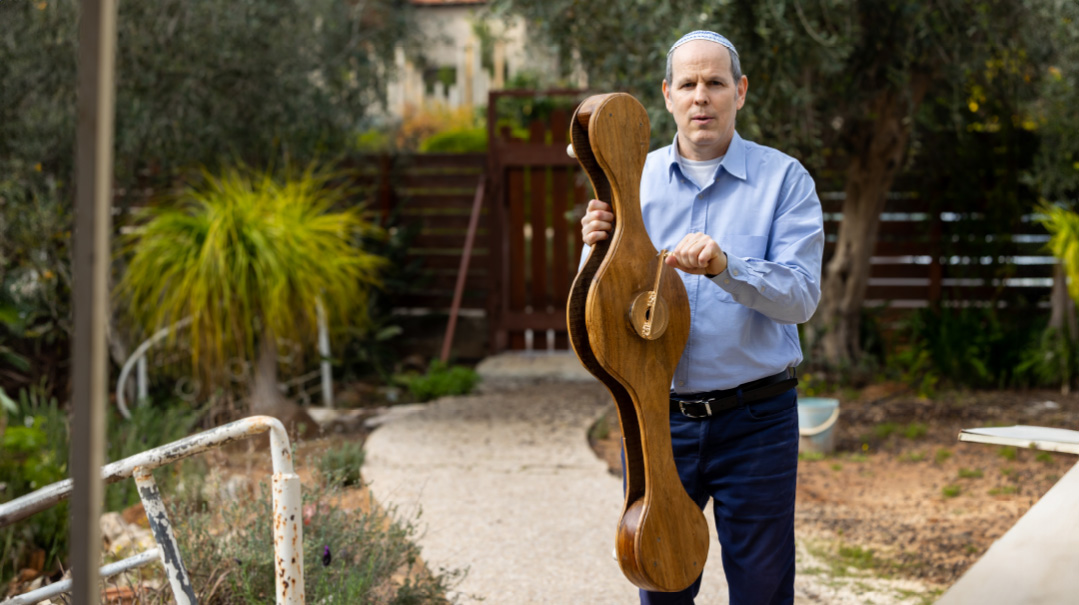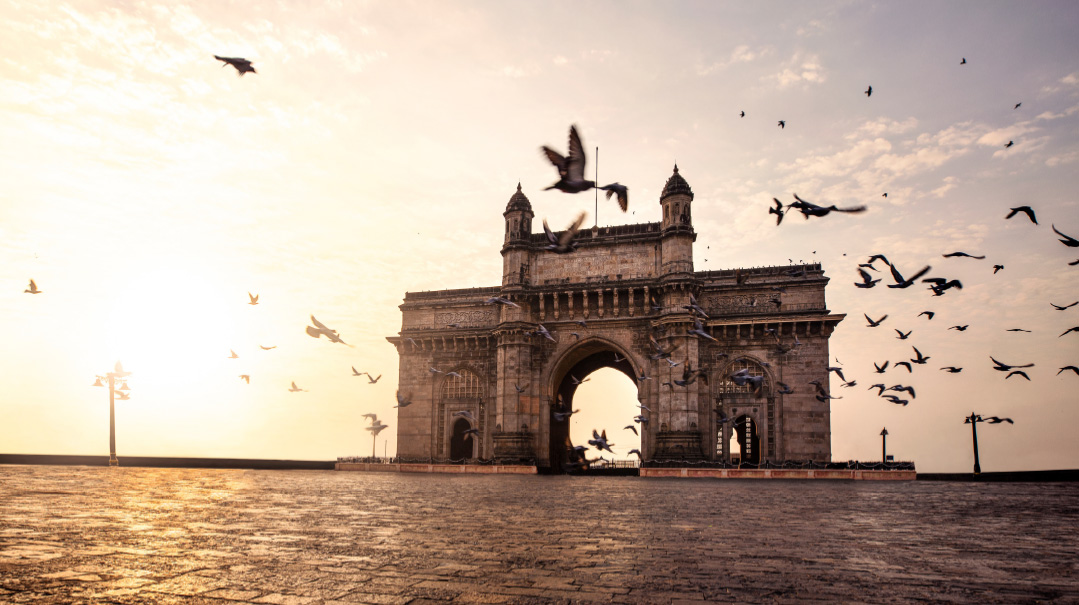A Sanctuary for Sarala

Rabbi Chaim Aryeh Zev Ginzberg brings a chorus of amens to his daughter’s resting place

An Odyssey Begins
Against the dazzling whiteness of Har Hazeisim, the black-hatted, dark-suited visitor stood out, a figure of mourning on a hillside of graves.
It was the third day in a row that Rabbi Chaim Aryeh Zev Ginzberg and his wife Avigail had come to stand by the fresh kever of Sarala, the 17-year-old daughter they’d lost.
As they quietly said Tehillim, the couple became aware that they’d been noticed.
Heading toward them was a figure they didn’t recognize. Nervously, they thought of the hostile residents of the surrounding Ras El-Amud neighborhood.
It was with relief that Rabbi Ginzberg finally saw that the approaching man was armed and wore a yarmulke.
“Shalom aleichem,” came the American accent of Josh Wander. “You’ve been coming for a few days now — can I do anything to help?”
Like the black-against-white visual that triggered it, that encounter stands out in sharp relief as the beginning of an odyssey for both the Ginzbergs and the unusual community they adopted.
Five years and millions of dollars of fundraising later, Maaleh Hazeitim, a community of 120 families that live amid heavy security on Har Hazeisim, has an imposing shul and community center.
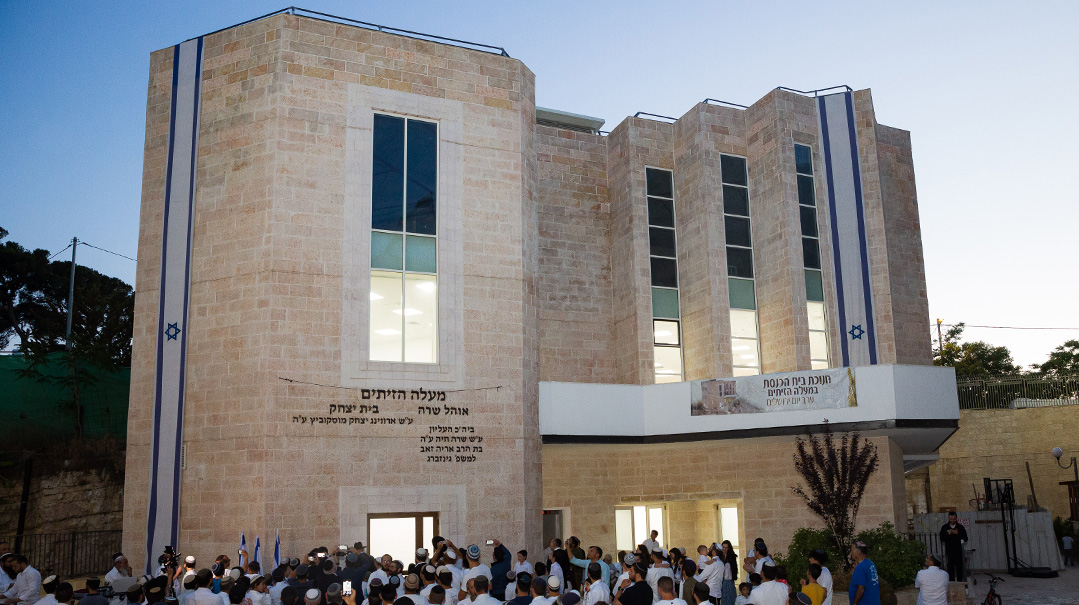
For the community, whose existence is part of the grinding battle to give Jews a toehold in the holiest and most strategic parts of the city, the completion of “Ohel Sarah V’Yitzchak” is a high point in their long struggle to return to Har Hazeisim.
That their shul was made possible by a chareidi rav from the Five Towns with no previous connection to the settlement movement is just another remarkable part of their story, now in its third decade.
For the Ginzbergs, the shul is the realization of a dream to give their daughter a legacy, a monumental act of love for a treasured child. In the process, the experience of accepting a financial burden well outside his comfort zone has taught Rabbi Ginzberg a lesson about spiritual goals.
“When you commit to something that is way beyond your capabilities,” he says, “HaKadosh Baruch Hu will turn the world upside down to see it fulfilled.”
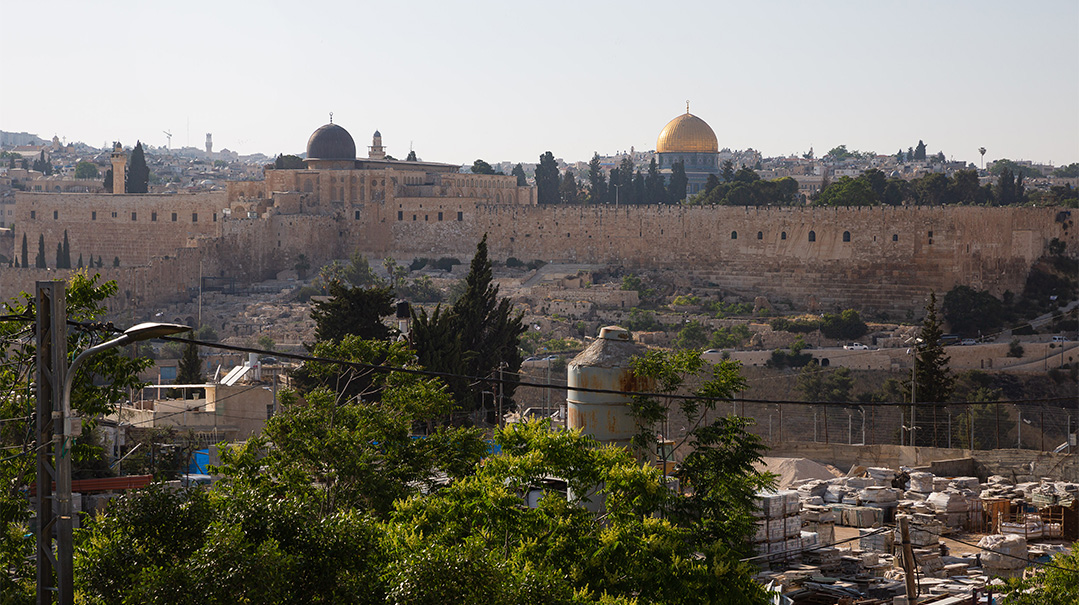
HIDDEN GEM The neighborhood has views of Har HaBayis that most Yerushalamis never get to see
Mountain with a View
When Mashiach comes, the residents of Maaleh Hazeitim will probably get the memo first.
The heavily secured compound — something of a hidden gem, unknown even to most Yerushalmis — is surrounded by a hostile Arab population. But take the elevator up from the entry-level parking garage guarded by Border Police (it’s the only entrance), and you’ll immediately see the neighborhood’s selling point.
Straight over the wall that separates the mothers and children inside from the bandit country beyond, the Kidron Valley, Har Hazeisim and then Har Habayis loom.
But when Rabbi Ginzberg first got the idea of a shul in the area, it wasn’t Maaleh Hazeitim that he thought of.
“After Josh Wander heard our story, he took us first to Beit Choshen, a house on the top of Har Hazeisim that houses eight families living with Arabs all around them. There are security guards at the entrance of the building, which is filled with children of all ages.”
The building’s rooftop, looking directly onto the side of Har Habayis hidden from the Jewish Quarter of the Old City, is used as a shul on Shabbos. The Ginzbergs were moved when they saw its proximity to their daughter’s kever.
“Chazal say about King Chizkiyahu’s death that they made a yeshivah al kivro — instituted Torah learning by his grave. When I saw the learning and davening taking place right near Sarala’s kever, I had the idea of renovating the rooftop, to make it a proper shul, in memory of my daughter. But Josh told me that given the international political sensitivity of the area, a proper shul would be impossible. So he offered to show me an alternative.”
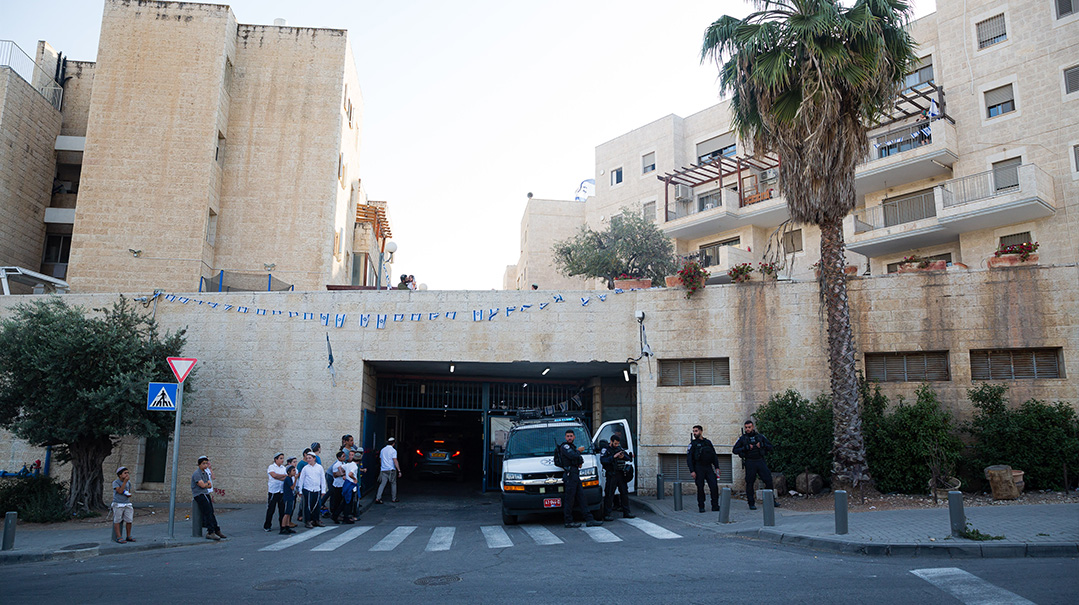
HIGH WALLS Located in the Arab neighborhood of Ras El Amud, Maaleh Hazeitim is home to 120 ideologically-driven families
Serenity and Struggle
Maaleh Hazeitim was what Josh Wander had in mind. Located on the southern slopes of Har Hazeisim, next to Derech Yericho, an ancient road out of the city that runs at the bottom of the massive cemetery, the neighborhood is itself no stranger to geopolitical sensitivity. It was the brainchild of Irving Moskowitz, who funded Jewish settlement in East Jerusalem.
Part of the land was purchased by Moskowitz from an Arab landowner in the area. It was supplemented by another section owned by Colel Chabad, a nonprofit fund founded in 1788 by the Baal HaTanya, which had earmarked the real estate for the expansion of Har Hazeisim.
It was the Lubavitcher Rebbe himself who green-lighted the transfer of the Colel’s property to the project. The real estate had originally been donated for kevarim, and so the Rebbe was asked whether it could be reassigned for homes.
“They gave it for people to buried,” replied the Rebbe, “and they’d definitely be happy for it to be used for living Jews.”
A sign of the difficulties in getting any building off the ground came in 1997, when the government under Bibi Netanyahu banned any construction at the site. Several Knesset members, including former war hero Rehavam Ze’evi, used their parliamentary immunity to build a perimeter wall around the first few residents who set up homes there, against the law. But by 2011, the ragged caravans of the site’s pioneers had made way for the current beautiful neighborhood.
Six buildings clustered around a spotless plaza, shaded by trees and flowers, house 120 families today. The feeling of serenity inside is intensified by the contrast with what lies outside: the large compound is guarded by high perimeter fences to thwart regular fire-bomb attacks.
“I was really blown away by what I saw,” says Rabbi Ginzberg. “It was an absolutely beautiful community with views of Har Habayis and dozens of children playing in the common courtyard.
“Then Josh showed me a large hole in the ground that was designated for a big shul — a shul that had never been built.”
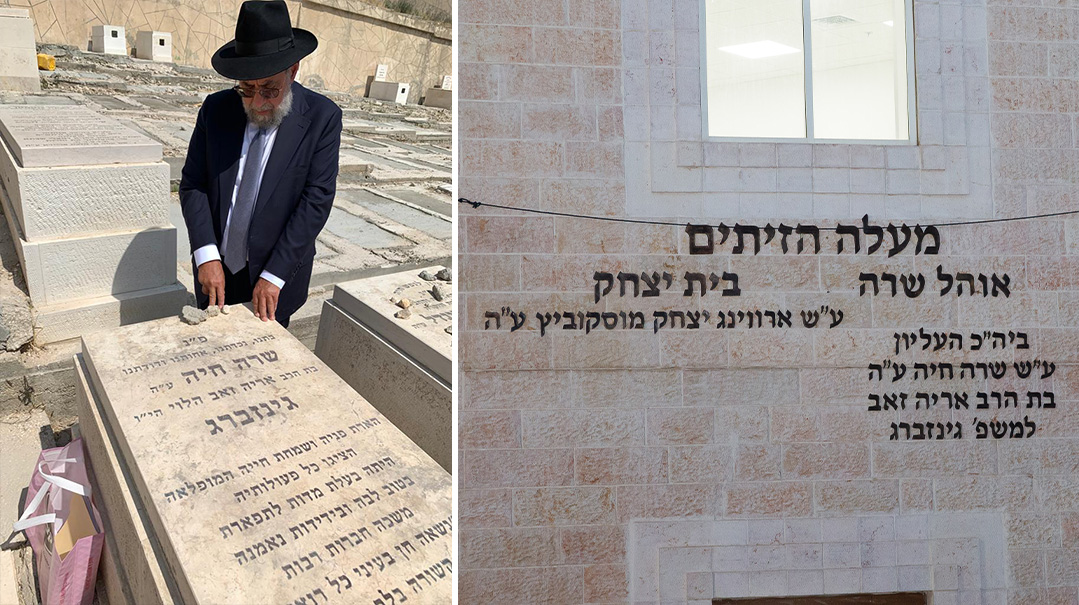
LEGACY Named after both Sarala Ginzberg and legendary builder of Jerusalem Irving Moskowitz
Above My Pay Grade
The missing shul wasn’t just meant for the residents of Maaleh Hazeitim. It was meant to serve the thousand or so Jews who live in the surrounding area — Jews who are building homes in the holy but currently hostile environs with great courage and idealism.
Spread over Har Hazeisim, there are five Jewish areas housing a thousand Jews, of which Maaleh Hazeitim is the largest. Just across the road, in a building that used to be a British police outpost, is a fortress-like compound, home to another thirty families.
There’s a strategic logic to the enclaves stringed across the area. From the walls of Maaleh Hazeitim are visible both the Old City and West Jerusalem on one side, as well as the security barrier that keeps out the bandits to the east.
The thousand Jews with their security cordon bisect the city to prevent the Arab population achieving contiguity and making the eastern part of the city a no-go zone for Jews.
For years, these families had been davening in a garage at parking level, but there were plans to build a real shul. Holding it back were significant bureaucratic, security, and financial challenges.
Josh Wander introduced the Ginzbergs to Yehezkel Heller, a veteran Maaleh Hazeitim resident who lived and breathed the shul project. He explained that it had taken over a decades’ worth of Sisyphean effort to shepherd the building plans through the various bureaucratic and security obstacles. Now all the permits were in place, but there were no funds. Would the Ginzbergs undertake to help raise the $3 million needed in memory of Sarala?
“I was overwhelmed,” says Rabbi Ginzberg. “I had never anticipated getting involved in such a large project. It was way above my pay grade. All I could envision was a partially built structure — one more stalled building project in Jerusalem. I told them that I would sleep on it.
“As I got into the car, I felt that this would be the last time that I would be in this place and see these people.”
Like something out of Megillas Esther, it was a sleepless night that changed the storyline.
“That night, sleep evaded me,” says Rabbi Ginzberg with the mix of emotion and intensity that his daughter’s loss has evoked. “Instead, I kept imagining the smile on my daughter’s face in Shamayim each time she heard ‘Yehei Shemei Rabbah’ coming from a shul overlooking her kever. I had this strong feeling that she really wanted me to take on the project.
“With my wife’s full encouragement, I called up Josh again and asked for another meeting. At the meeting, this time with the full building committee, I asked them a difficult question. ‘What guarantee do I have that the project will be completed?’ ”
It was Yehezkel Heller who answered.
“He looked me in the eye and said, ‘All I can promise you is that I won’t leave this project until the last stone is in place. I stake my life and the lives of my family on it.’”
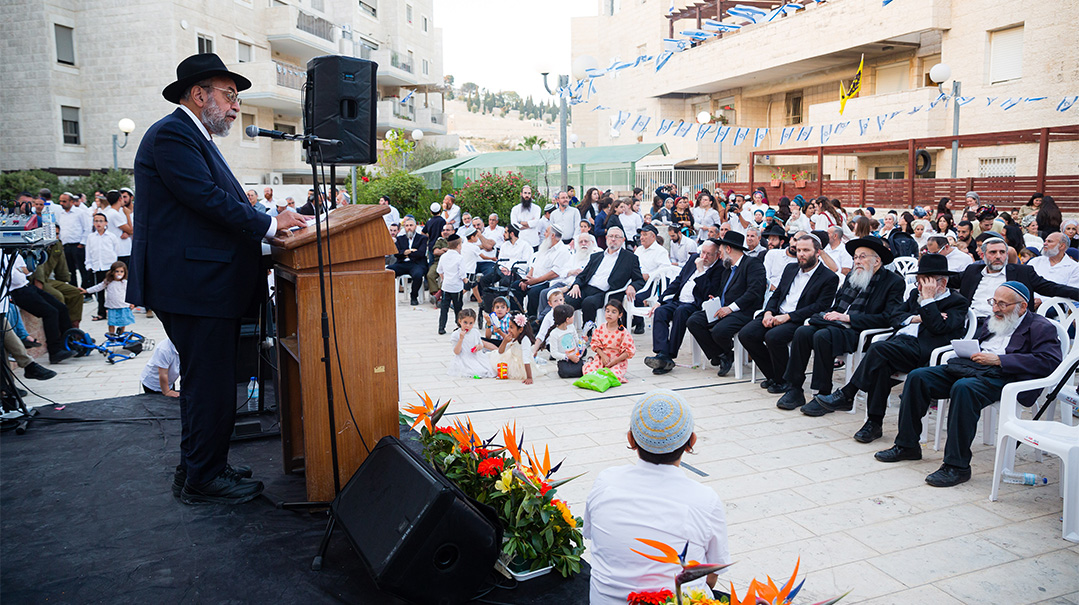
Regards from Rav Schwab
With both sides committed, the terms were written, the group drank l’chayim, and then the hard part began: finding the millions necessary to make the dream a reality.
But first, Rabbi Ginzberg received the final confirmation that he’d chosen the right path.
“It was two days later on a Friday, and I began to have reservations: What right did I have to make such a promise to them when I had no idea how it would be fulfilled, and why indeed to a community that I’m not really part of?” he recalls.
Still in turmoil, Rabbi Ginzberg was standing in Geula on a crowded street, when a stranger approached.
“Shalom aleichem, Rabbi Ginzberg, how are you?” asked the man. Rabbi Ginzberg struggled and failed to place the other person, who then explained their connection.
Some ten years before, the man — who is a member of the Washington Heights community — had heard Rabbi Ginzberg speak at a dinner and relate a story about Rav Shimon Schwab. That forgotten speech led the man to develop an interest and proficiency in Rav Schwab’s seforim.
In an act of minor prophecy entirely in keeping with the epic feel of the entire shul project, the man randomly started to quote something from the great German rav.
“He spoke about ‘Mah tovu ohalecha Yaakov,’ which refers to shuls,” concludes Rabbi Ginzberg. “At first, I thought it was odd, and then it hit me that this was the sign from Hashem that I’d been waiting for. I was all in.”
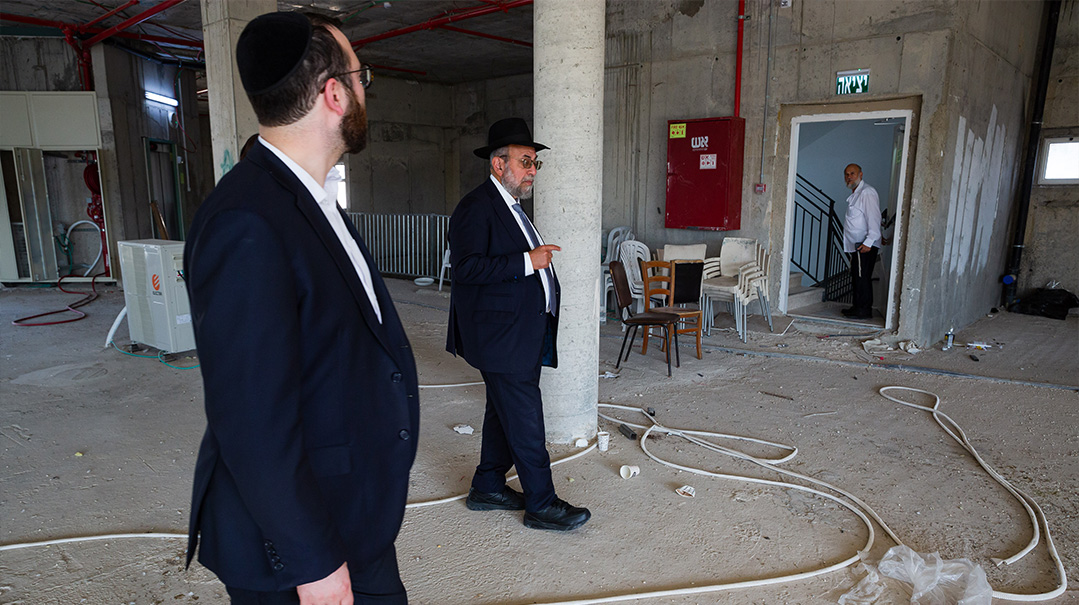
APPLIED TORAH The Kodshim studied in this third floor Beis Medrash will be within sight of the Har Habayis
Worlds Together
To see the Ginzbergs alongside the residents of the area who’ll use Ohel Sarah is to see two very different universes mix.
A distinguished community rav at the Chofetz Chaim Torah Center in Cedarhurst, New York, Rabbi Ginzberg in his black hat and suit looks worlds apart from the uniform of large kippah serugah and gun worn by most of the men.
But beneath the surface differences, there was a meeting of minds between the two sides.
“My parents survived Auschwitz,” explains Yitzchak Neuman, in his sixties and one of the oldest residents, “and they always wanted to live in Yerushalayim. So I’ve moved here from Kedumim in the Shomron, which is where I still commute to work. I came here to be close to the Beit Hamikdash and because of the quality people who live here.
“Many of the men here are in kollel,” he continues. “They belong to either Mercaz Harav or Rav Tau’s Har Hamor yeshivah. You’ll find lots of Torah learning here, and no TVs.”
Neuman’s reference to these two institutions — the dominant yeshivahs in the chareidi-style “Chardal” wing of the national-religious world — mark Maaleh Hazeitim as part of a significant change taking place in Israeli society.
Under the radar of many in the chareidi and secular publics, this wing of the dati-leumi world has produced a large and growing cohort of full-time kollel students.
In the garage-level beis medrash that was Maaleh Hazeitim’s old shul, a kollel of men learning Kodshim are oblivious to the hubbub of preparation for the complex’s opening event.
“We’re preparing for what will happen on the hill opposite,” says their rosh kollel, referring to Har Habayis, facing us.
But while many of the externals of pronunciation and dress are just that — externals — substantive differences do exist between the residents of Maaleh Hazeitim and religious communities in West Jerusalem.
“It’s essentially a spillover from the Old City,” says Josh Wander, who has lived in the neighborhood for eight years.
Wander, who promotes aliyah, is a colorful personality who typifies the frontier spirit necessary to live here. His business card for his organization, which is called “Bring Them Home,” bears the title “Redemption Expediter.”
“People who were raised there and can’t afford the astronomical prices come here. It’s significantly cheaper than the west of the city, but you need to be a specific type.”
He means, first and foremost, ideologically driven to live in a place that is essentially a front line. Beginning with what was practically a revolt in last year’s Gaza conflict, Arabs across the country have spent a year in ferment; buses to the Kosel, which is just down the road, are regularly attacked. Here in Maaleh Hazeitim, all the men are armed, as they have to be to walk the streets of an area where even the police and army go in combat gear.
But Wander — who leads guided tours around Har Hazeism and crosses the ancient hilltop for Shabbos afternoon walks to the Old City — says the residents feel safe. “When people leave the compound, they’re followed by dozens of cameras manned constantly by a police unit — response times to incidents are very fast.”
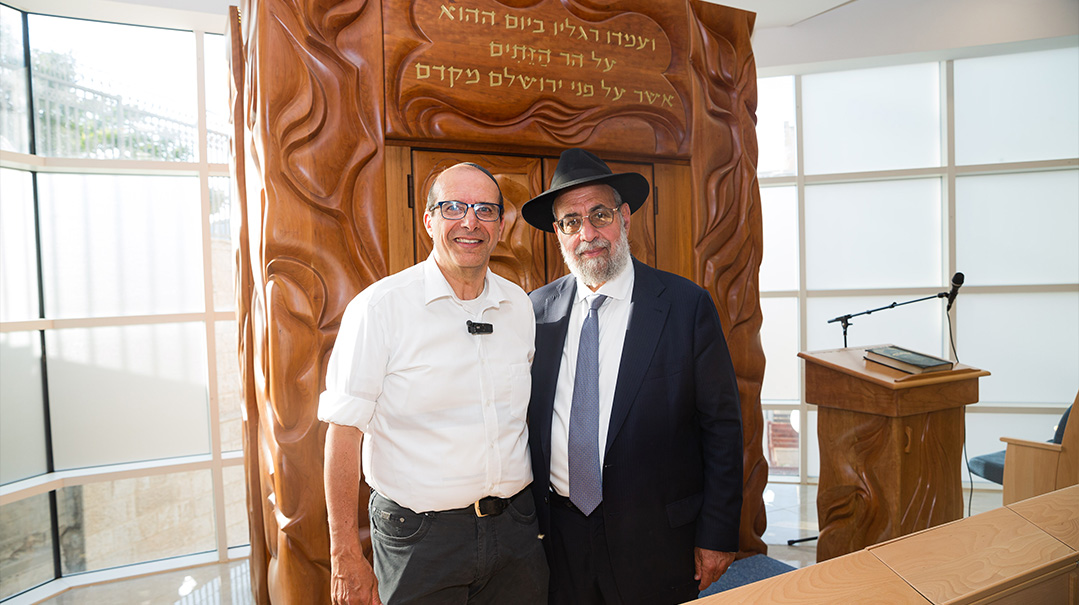
ACROSS THE FINISH LINE Under Jerusalem Deputy Mayor Mordechai Banita, the project overcame war and new building codes
Labor of Love
As the shul project progressed from an initial nebulous promise to an actual building, the Ginzbergs saw their lives grow more intertwined with the neighborhood’s residents. At the same time, many of their friends back in New York questioned their decision to invest so much in the project.
“One dear friend who is a supporter of many Torah institutions commented to me that he couldn’t understand why I picked this community to get involved with, when there are so many others that are more in line with my hashkafos that also need assistance,” Rabbi Ginzberg says.
But he and his wife knew there was something special about this project — and their certainty only grew as building moved forward.
“My wife and I would visit several times a year, and we were amazed to watch young men with peyos and tzitzis cutting bricks and mixing cement,” Rabbi Ginzberg remembers. “When the cement was being poured, they would be dancing around singing songs of rebuilding Yerushalayim. To them it wasn’t a job, it was a labor of love.”
When the groundbreaking celebration took place, he invited several good friends from back home to participate. When that friend who’d criticized him met the people and felt their love for Yerushalayim, he approached Rabbi Ginzberg, contrite.
“Now I understand,” he whispered.
With Mordechai Banita — a deputy mayor of Jerusalem and resident — now at the helm, the project was progressing. But even as the foundations were being sunk, a series of obstacles cropped up.
These included a war with Gaza, the Meron tragedy — in whose aftermath the government retroactively tightened building safety codes, requiring massive new outlays — and a near-fatal encounter with Covid.
In February 2020, the Ginzbergs visited both their daughter’s grave and the worksite of the shul being built in her memory.
Mordechai Banita was ready with an update: “Rabbi Ginzberg, on your next visit you will see the shul mostly done,” he informed them.
That next visit almost never happened. Two weeks later was Purim at the height of the first Covid wave. A week after, Rabbi Ginzberg was in the hospital in an induced coma, on ventilation and with major organ failure.
On Erev Pesach, Rebbetzin Avigail Ginzberg was told to come to the hospital to say goodbye, but her husband held on. For another three weeks he remained in a coma. Of the 13 patients in the ICU, he was the only survivor — a fact that baffled the medical staff.
“What they don’t know about is the tefillos of Klal Yisrael,” says Rabbi Ginzberg.
“When the community members at Maaleh Hazeitim heard about my condition, they organized Tehillim groups and learning sessions as a zechus for my refuah. When I was able to make my first visit to Eretz Yisrael after coming home due to an outright miracle, I went to visit the community. I told them, ‘Who knows if this unfinished shul was my salvation as my business in this world was not finished?’ ”
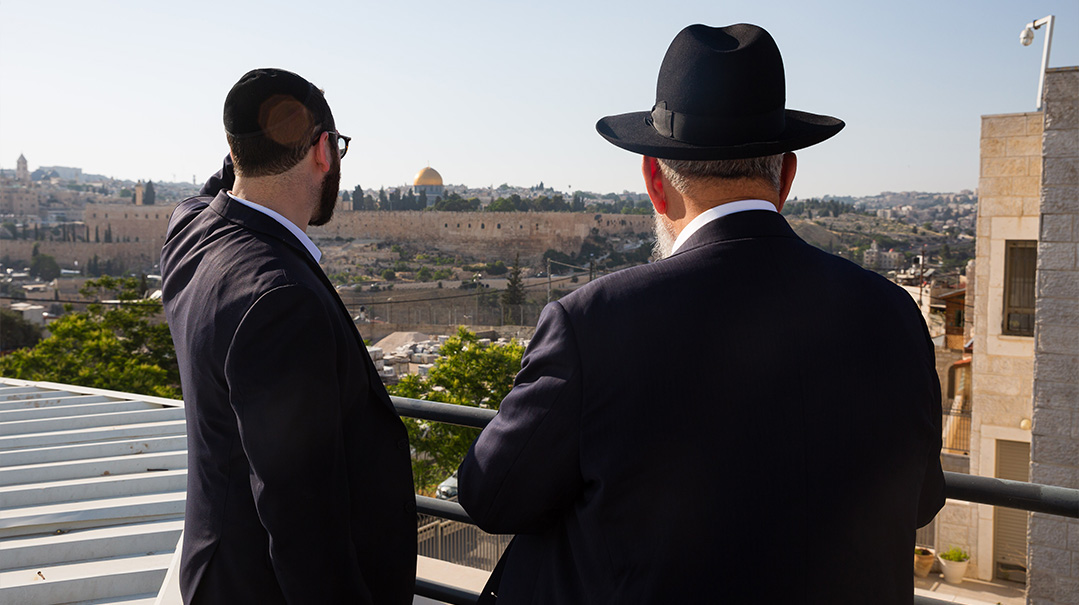
Sarala’s Legacy
Like many building projects, the shul at Maaleh Hazeitim ran way over budget. The original $3 million estimate hasn’t proven enough, with the final cost closer to $5 million.
Over the last five years, the project of building the first shul to grace Har Hazeisim in thousands of years looked a mountain too big to scale.
“There were many days when I really didn’t believe that it would happen,” Rabbi Ginzberg admits. “Cost overruns, wars, and of course Covid had derailed many a project — but just somehow, this one continued. Money was short, supplies often difficult to secure, but it continued anyway. Sometimes I felt that we were really just going through the motions and Hashem was really doing it all.”
The opening of the shul on a warm spring evening just before Shavuos feels like a promise kept.
As Israel’s Sephardic chief rabbi, Rav Yitzchak Yosef, arrives, the children of Maaleh Hazeitim — many with long peyos —practice in a small choir to welcome the dignitaries and form two Meah Shearim-style lines to sing “Yamim al yemei melech tosif.”
Hundreds of guests, including rabbanim and politicians, join the locals in front of the imposing building, built over four floors that contain both Ashkenazi and Sephardi shuls furnished in light wood, as well as a main beis medrash, a kollel, a library, and a simchah hall offering a breathtaking view of Har Hazeisim.
“When we visit Sarala z”l’s kever, we’ll tell her that her mother and I kept our promise that we made to her the day of the groundbreaking,” Rabbi Ginzberg says.
There’s a certain tenderness that creeps into Rabbi Chaim Aryeh Zev Ginzberg’s voice whenever he talks of his daughter, a soft tone that vies with his normal decisiveness. Together, they explain the journey he and his wife have taken to give their child a legacy.
Theirs has been an unconventional path, bringing together different worlds of faith and love for Yerushalayim.
“She left this world at the age of 17, which didn’t give her the opportunity to answer Amein as many times as most of us do,” concludes Rabbi Ginzberg. “Now she will hear the tefillos rising from a shul right beside her, and her neshamah will be able to answer Amein — again and again, until techiyas hameisim.”
(Originally featured in Mishpacha, Issue 914)
Oops! We could not locate your form.

